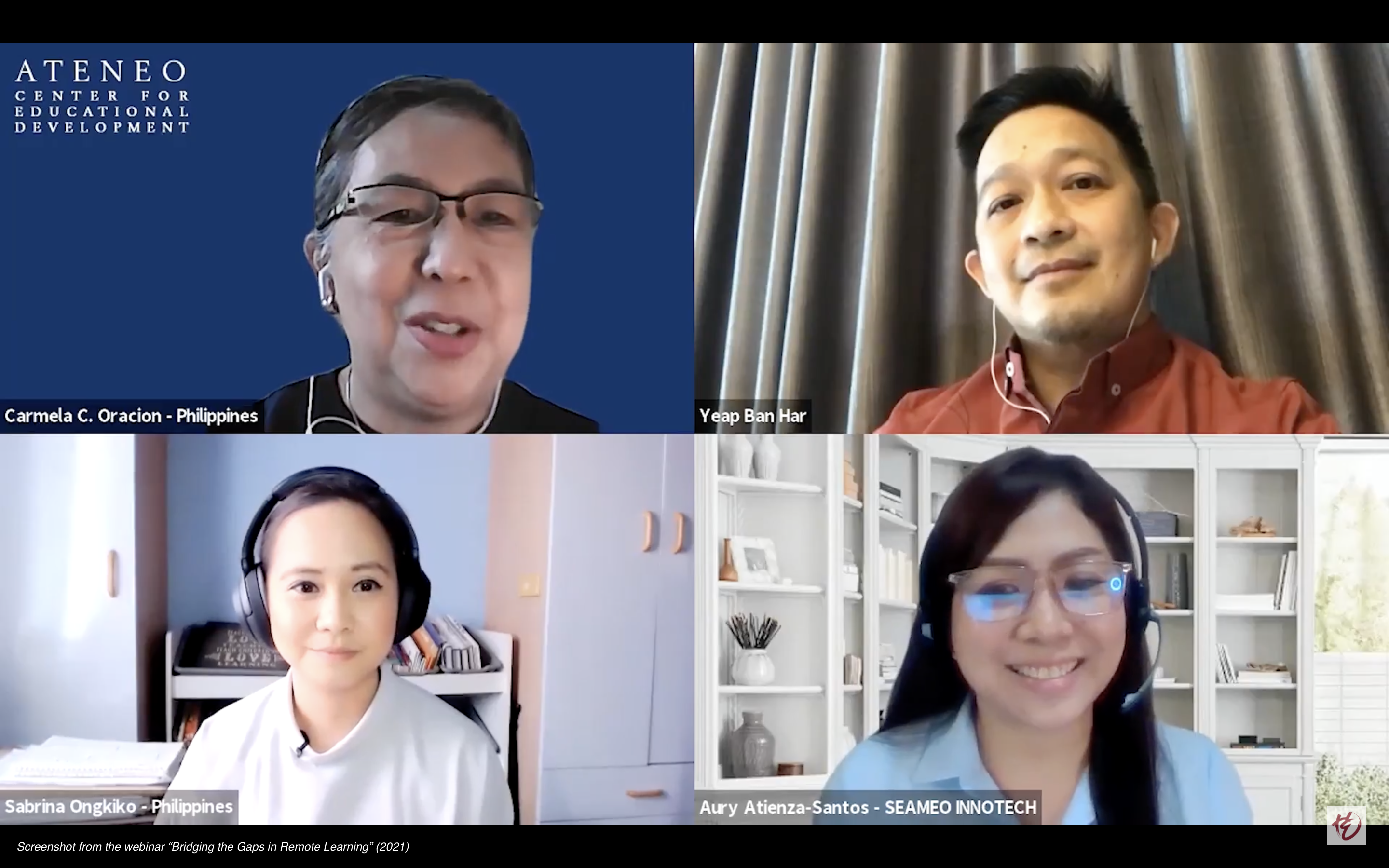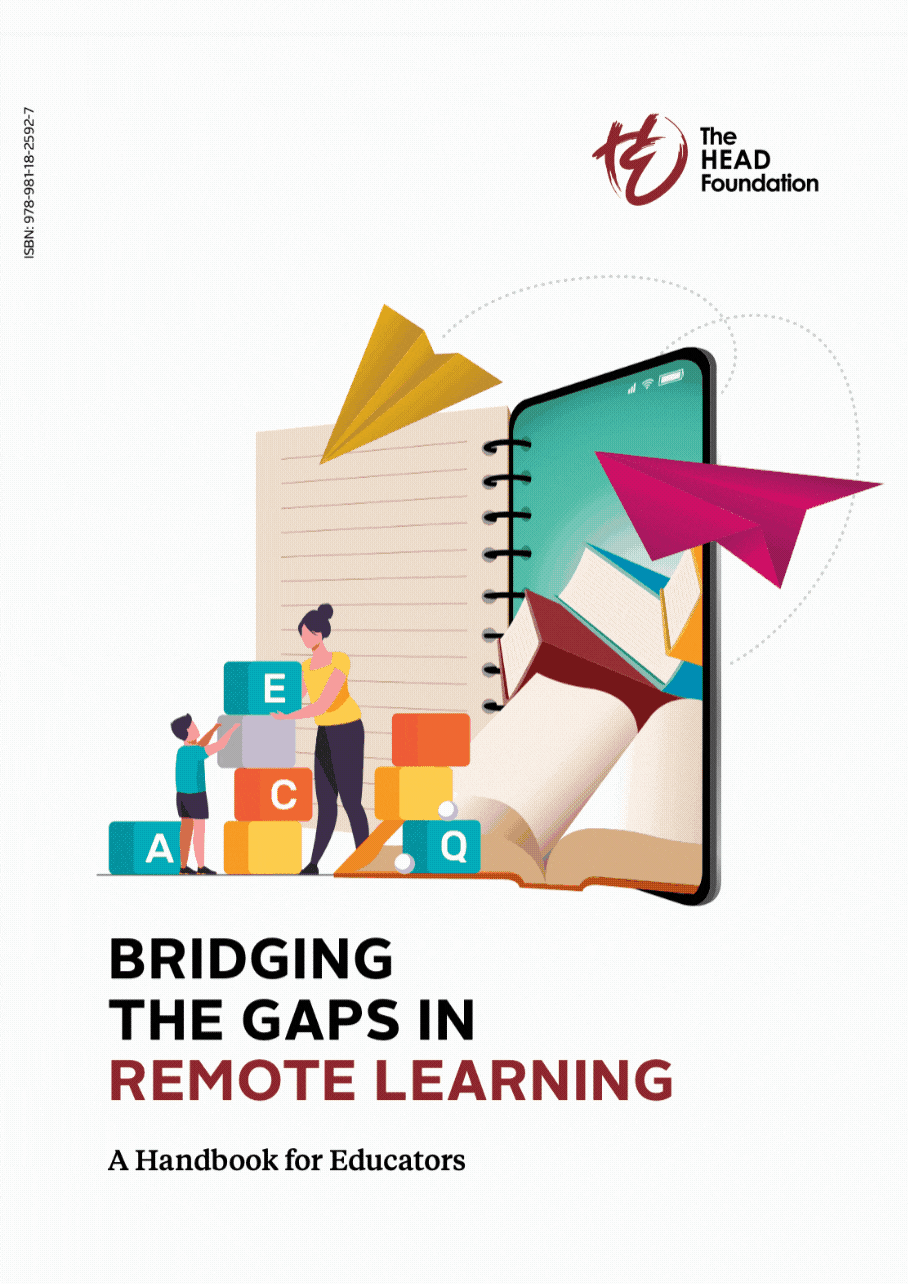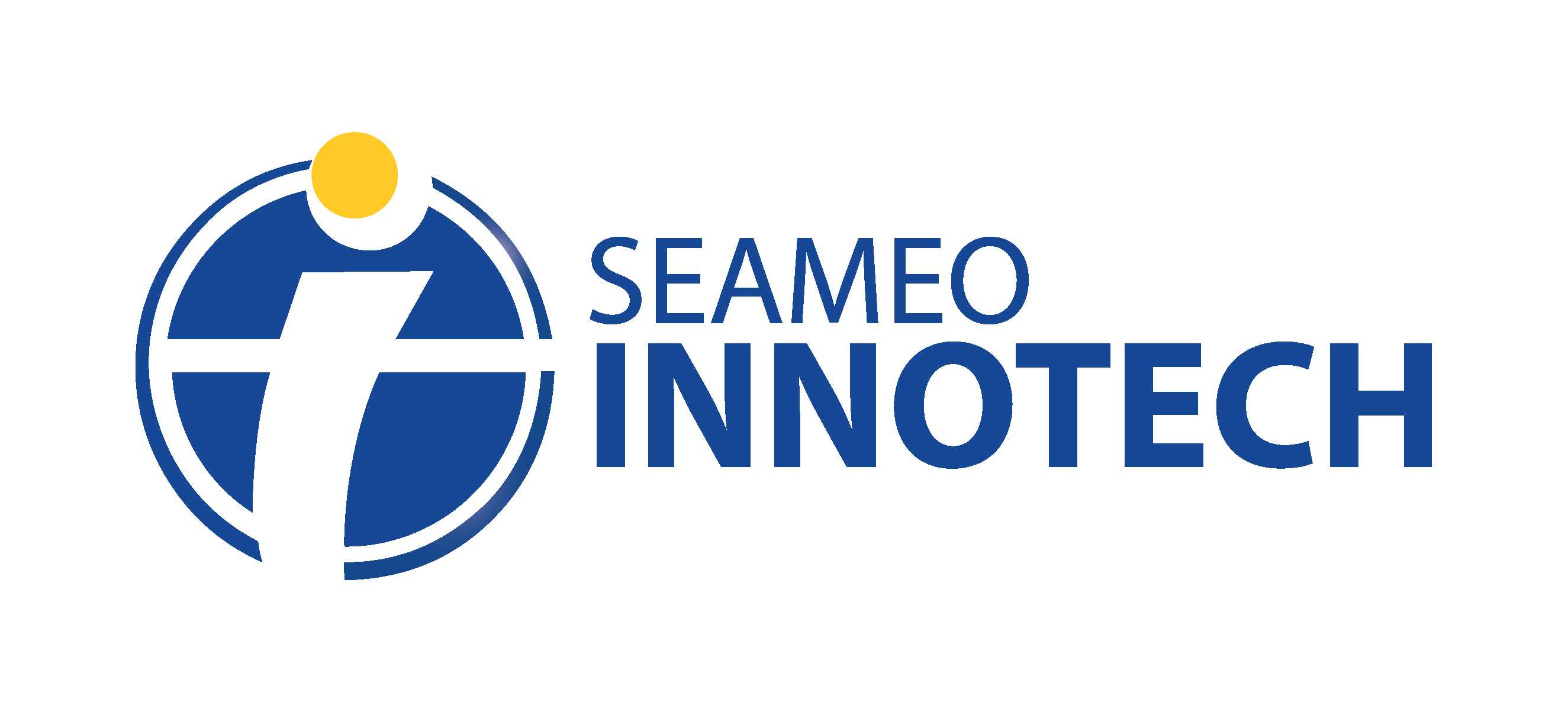
MT4T resources featured on The HEAD Foundation Webinar and Handbook for Educators
Earlier this year, SEAMEO INNOTECH participated as a resource speaker in The HEAD Foundation’s webinar series dubbed “Bridging the Gaps in Remote Learning.” Ms. Aury Atienza-Santos from the Educational Innovation Unit shared the Center’s Mobile Technology for Teachers (MT4T) project, highlighting the importance of cyber safety and digital citizenship among teachers and learners. HEAD Foundation is an International Charitable Organization based in Singapore which was established to carry out philanthropic works in education and healthcare to improve lives in the less developed parts of Southeast Asia.
(WATCH: Part 2: Using Digital Tools | Bridging the Gaps in Remote Learning)
As teachers and learners increase their time on their mobile devices and via online, there is a greater need to discuss the safe and responsible use of these platforms. MT4T is a resource kit for teachers to help them maximize the different mobile technologies, digital tools, and social media platforms for teaching and learning. The resource kit contains e-Books on how to get started with various digital platforms, how to incorporate it in classroom teaching, and how it can help their personal and professional development.
One of the e-Books in the MT4T resource kit called “e-Citizenship: An e-Book for Teachers about Cyber Wellness and Digital Citizenship,” aims to provide teachers with tips, strategies, and activities to teach learners how to be safe, healthy, and responsible users of information and communications technology (ICT).
The e-Citizenship e-Book has ten mini-lessons or learning packets focused on cyber safety and digital citizenship concepts such as being mobile, cyberbullying, cybergrooming and online exploitation, exposure to inappropriate content, Internet addiction, plagiarism and misinformation, teenpreneurship, trolling, herd mentality, and cyberstalking.
With the continuing use of digital tools for remote learning, teachers should become familiar with the opportunities and threats linked to digital technologies. That knowledge will also allow them to equip their learners with the understanding and skills needed to maximize the use of digital tools while also protecting themselves from cyber threats through e-safety practices.
(Check out the e-Citizenship e-Book and Learning Packets on the MT4T website)

Following the series of webinars, The HEAD Foundation published a handbook, “Bridging the Gaps in Remote Learning: A Handbook for Educators,” to help them create inclusive and engaging lessons in remote settings. The handbook compiles relevant resources and insights shared during the webinar series. Additionally, it contains reflective points and activities that educators can consider and adapt in their schools. It has eight chapters covering the following topics: Planning and Designing Learning Experiences, Digital Tools for Teaching, Teaching Cybersafety and Wellness, Using Radio to Broadcast Lessons, Making the Most Out of Paper-Based Learning, Bringing STEM Education into Remote Learning, Assessing Your Students’ Learning, and Taking Care of Your Community. Featured under the Teaching Cyber Safety and Wellness chapter of the handbook is the Center’s MT4T resources on digital citizenship—the e-Citizenship e-Book and learning packets.
You can access and download “Bridging the Gaps in Remote Learning: A Handbook for Educators” on The HEAD Foundation website.





